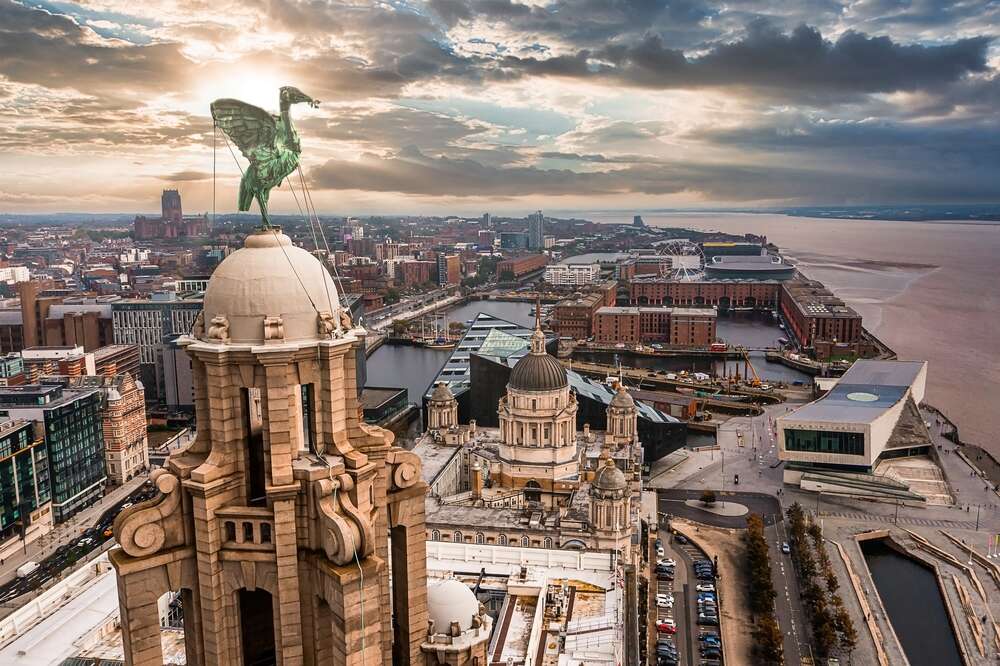
Often, it’s simply assumed that Liverpool’s historic population decline is true. Indeed, proud Londoner Lord Adonis – a leading proponent of the Liverpool-bypassing HS2 railway – stood on the stairs in Liverpool Town Hall in 2011 and said: “The population of Liverpool has nearly halved in the last 50 years.”

This raises two questions. Firstly, did the population of the City of Liverpool really nearly halve in the 50-year period to 2011? That’s easy to check using this University of Portsmouth website. In 2011, the population of the City of Liverpool was 466,415. Half a century earlier, in 1961, it was 737,637, which equates to a 37% drop.
In fact, the City of Liverpool’s peak population was recorded in the 1931 Census as 846,302. Its lowest subsequent figure was recorded in the 2001 Census as 439,428 – which represents a 48% decline from the peak population, over a 70-year period.
Compare this with the population figures for the similarly sized City of Manchester. Its peak population was also recorded in the 1931 Census as 748,729, and its lowest subsequent figure was also recorded in the 2001 Census, as 392,830. This also represents a 48% decline from the peak population, over the same 70-year period.
So, as can be seen here, Liverpool is not a special case at all. So why it is often singled out or portrayed as exceptional in this regard, in the media and, indeed, by some badly briefed politicians?
This leads to the second question.
Liverpool’s population: where have all those people gone?
It turns out that the answer is perhaps obvious: after the Second World War, lots of people moved to the suburbs – cars, commuter trains, slum clearance, the Blitz. In other words, Liverpool is just like many other places: after the war, this country experienced a depopulation boom.
So what form did this movement to the suburbs take, as far as Liverpool was concerned? Well, people moved and were moved to the suburbs of Greater Liverpool, in what are now the outer boroughs of the city region: Halton, Knowsley, St Helens, Sefton, Wirral. Others moved further, to Cheshire West & Chester, West Lancashire, Warrington, and even nearby north Wales.
[Read more: The leaving of Liverpool shows up Unesco’s flaws]
In common with many cities, Liverpool City Council actually built and owned large several ‘New Town’ council estates, to which they moved tens of thousands of people from Liverpool’s inner districts: Winsford in Cheshire West, Runcorn in Halton, Skelmersdale in West Lancashire, Kirkby in Knowsley. There is nothing unique or sinister here about Liverpool. This was common practice across the country – it was central government policy – and resulted in about 160,000 people being ‘removed’ from the Liverpool local authority area.
Many other people also moved to the nearby suburbs of Greater Liverpool to private housing – another trend reflected across the country. It’s worth acknowledging, however, that cities across the world are subject to a level of ‘churn’ in population, whereby many people move out and many people move in, over time, too.
So how did those prominent images of derelict streets in the inner-city part of the City of Liverpool local authority area come about? For that, you have to blame the last Labour government’s over-zealous ‘Housing Market Renewal Initiative’ (HMRI) disaster – and the over-enthusiastic participation of the then-Lib Dem-controlled city council. On the promise of ‘free’ money from the central government, the latter removed hundreds of people from their homes with a view to demolishing the Victorian terraces and building new replacements. Many of these houses, in truth, were already fully modernised, owner-occupied houses within viable and long-standing communities.
Nonetheless: the council bought the houses and ‘tinned them up’ ready for demolition. Then the coalition Conservative/Lib Dem government, elected in 2010, pulled the plug on the scheme.
Liverpool metropolitan population
At any rate, it turns out that the Liverpool metropolitan population is pretty much the same as it was at its peak in 1931 (depending on where the local borough boundaries are arbitrarily drawn). It just begs the question: why are well-educated and supposedly clever people misrepresenting the Liverpool metropolis, in particular, in this way so often?
And why are some people so determined to always isolate the City of Liverpool from its hinterland, while London is always described in terms of its whole urban area? It just confuses and undermines what would otherwise often be worthwhile comparisons and discussions. Or, to put it another way, never, ever, compare apples with larger urban zones.
In a 2017 Channel 4 documentary, for example, the well-known and respected journalist Michael Buerk directly compared the forecast population growths, by 2039, of the City of Liverpool’s single local authority area against that of the combined 33 local authority areas of Greater London: 42,722 versus 2.187 million. What bizarre point is such an inappropriate comparison even trying to make?
Having said all that, there is an important sensible conversation to be had as to why the populations of the Greater Liverpool metropolis and others haven’t grown as fast as maybe should have been the case, while, in recent times, the Greater London population has been burgeoning. But constantly pitching it as some sort of rare local apocalypse helps no one.
Oh, and the most recent population of Liverpool? 835,000.
[Read more: The story of 1980s Liverpool shows what happens when a city tries to rebel]






